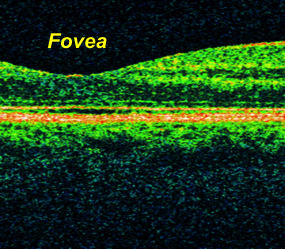When I started working on creativity I wasn’t sure how many people would share my view that science is a very creative activity so I approached Dr Ruth Hogg, a vision scientist from Northern Ireland, to find out what she thought. I first met Ruth when she was living in Cambridge. She had trained as an optometrist, and decided to focus on research rather than purely clinical work. After a PhD in Belfast and a couple of years postdoctoral research in Melbourne, she joined the Vision Laboratory at the University of Cambridge. She was also a founding member of the Cambridge Veritas Forum, running events to help students and faculty to ‘engage in discussions about life’s hardest questions and the relevance of Jesus Christ to all of life’. When I next contacted Ruth she was lecturing and running her own research group at Queen’s University in Belfast.
The first thing I discovered on talking to Ruth is that she is an accomplished pianist. In her mid teens she wanted to be a musician, but eventually settled on science instead. She now works on age-related macular degeneration, which is the biggest cause of blindness in the older generation. The macula is the most sensitive part of the eye and is responsible for most of our vision, especially detailed work like reading. Ruth and her colleagues are looking at the different factors that affect whether a person will develop macular degeneration later in life, and particularly those that are inherited.
One of the delights of Ruth’s work is to make beautifully detailed images of the eye. The back of the eye – the retina – where the macula is located is a highly complex structure composed of different layers of nerve cells. Many eye clinics now use Optical Coherence Tomography (OCT), a non-invasive technique using near-infrared light to create three-dimensional cross-sections of the retina. Looking at these pictures, it’s easy for Ruth to appreciate how the structure of the eye fits its function, and how precise our vision can be despite all the potential problems.
Ruth is a creative person, so she is comfortable with the concept of creativity in science. She enjoys developing new ideas and trying things out, particularly now that she has a team of people to help her. When I asked her about creativity among her colleagues, she said that she has always been amazed by the number of scientists she meets who are accomplished musicians, artists or something else quite overtly ‘creative’ – and not just as a hobby, they are really quite expert. So scientists are obviously not just creative in their work.
Also, as a pianist Ruth has been always been able to appreciate both the creativity and the discipline required to do science. Anybody who has learned an instrument will know that although there is creativity within music, it also involves working within a certain structure, particularly for classical musicians. Often understanding the theoretical aspects of music such as harmony can allow a musician to take it to a different level and start doing original things. It’s very much the same in science: everyone is working within the same scientific method, but to do something new and exciting you really need to work creatively. The entry requirement for scientific researchers is the achievement of a PhD, and to earn a PhD you need to produce something novel within your field of research. So every scientist has to be able to produce something original before they can be part of the world of science. Is science more like art than more people realise?
Read Part 2 of this interview here.





